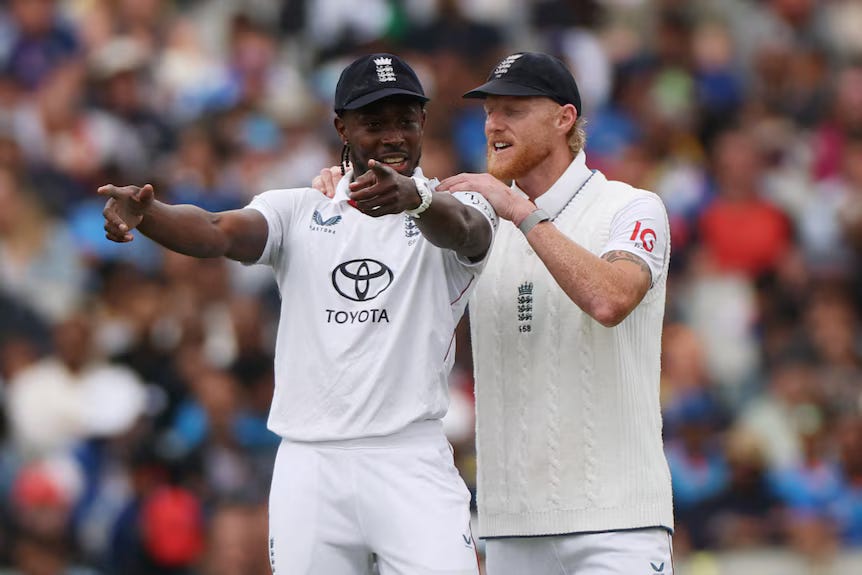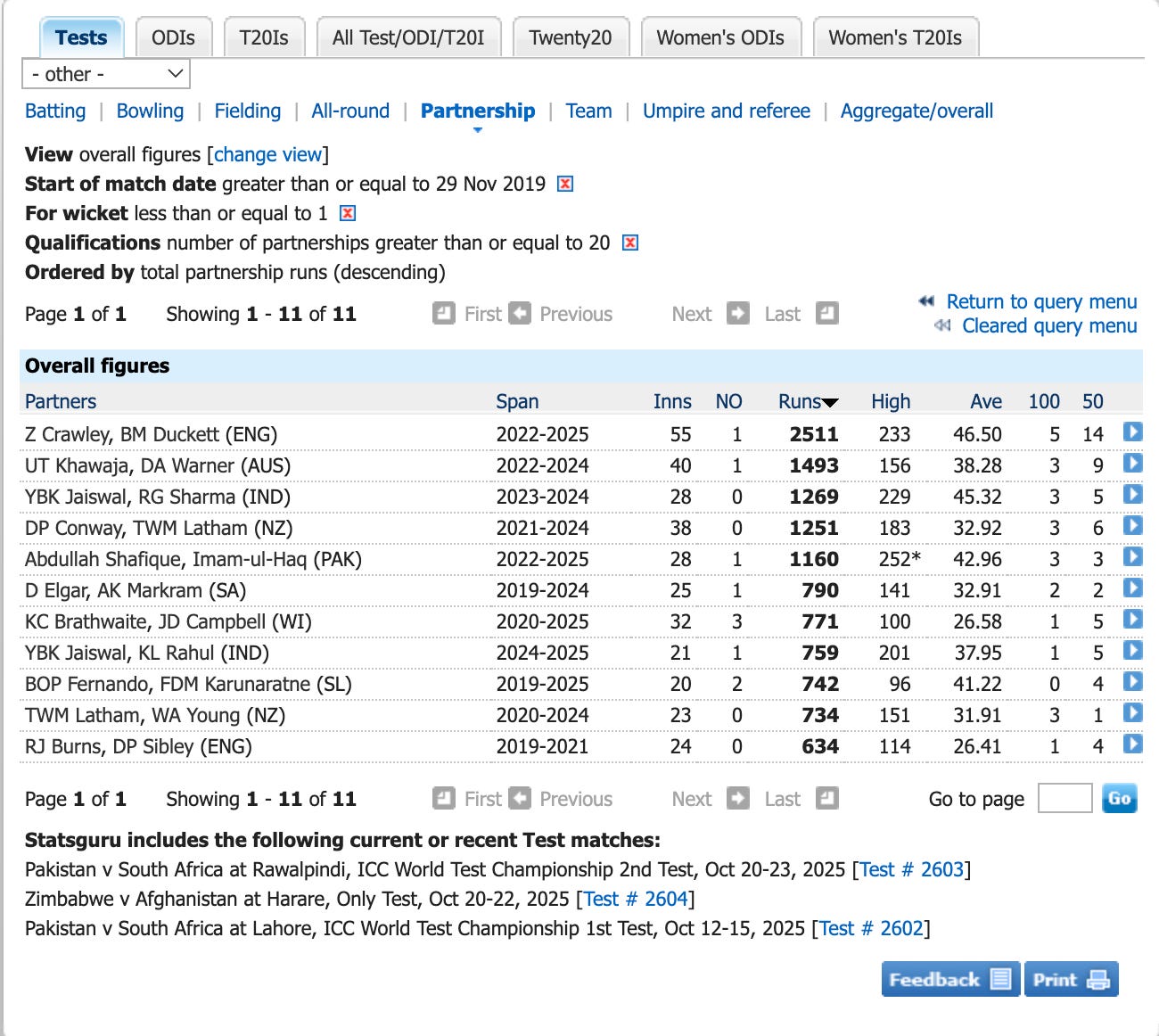How is England looking?
It's hard to tell given their time in New Zealand. But then the Ashes is different?
Stats mean little to the revolutionaries of cricket in the 21st century. With this in mind, I’ll keep this brief (that’s the stats bit).
England have lost six of their last seven one-day series. Their world ranking is 8th—Afghanistan head them. On the positive side, they bat at 6.30 runs per over. If, and if they could be bothered, if they elongated their innings past the thirty-odd over mark with the same run-rate, then presumably, their win-rate would increase and their world ranking would improve. However, and a big however, who dares to raise such concerns?
SpeakingCricket is made possible by your subscriptions. If you’re still a free subscriber, please consider upgrading to a paid subscription. Your support truly makes a difference.
Test coach, Brendon McCullum, took over England’s ODI side in January 2025 as part of a strategic restructure following the sacking of Matthew Mott in July 2024. Mott presided over England’s disappointing performances in the 2023 ODI World Cup and the 2024 T20 World Cup. He presented as a sitting duck as McCullum’s star rose through strong performances in Tests.
The recent three-match ODI series in New Zealand finished with New Zealand winning the series 3-0—a clean sweep. You might think that a little more attention to detail might have been given. Here in South-East Australia and New Zealand, the weather has been awful, making productive batting more challenging than most of England’s batters had the appetite for.
Does this sound obvious? With two new white balls in play, and in the hands of decent bowlers, home-town advantages prevalent, a more measured approach to gathering runs might have been considered. And, more alarmingly, England passed up the opportunity to ingrain some habits that they will absolutely need in the imminent Ashes series, which both sides are desperate to win, and win with bragging rights.
It’s a wonderfully cerebral maxim to “be brave and keep moving forward,” but, at some point, thought must be given to variables that acutely affect outcomes. Surely Coach McCullum could concede that?
And the ball turns red.
I gave some consideration to the make-up of Australia’s side here. It was more from a selectorial viewpoint. Who and why I would pick, more than who I thought George Bailey and co would select. And how is England looking in comparison?
From a selection bent England look more certain. Given a clean fitness card, the first seven pick themselves. Ollie Pope will get the initial crack at first drop—he has better than average numbers at the start of Test series, opposed to later. Jacob Bethell, still to make a first-class hundred and with only eight fifties from 40 innings, will get his chance at some point.
Eight down are bowlers, or Will Jacks as a bit-part all-rounder, more there for the extra batting option than his off-breaks. Leaving three spots for the quicks with Ben Stokes to pick up the slack. Or the visitors might opt for four quick if Stokes’ fitness is not 100%. I don’t see finger-spinner Shoaib Bashir playing until later in the piece. A key decision will centre on whether England goes all in or takes a more measured approach with Mark Wood and Jofra Archer. I expect both to play in Perth, and then it could be a ‘one in, one out’ approach, dependent on the series scoreline.
So will England’s batters temper their aggressive bent?
If England is to win back the Ashes, this is the match-up they have to win. Their batters must counter Australia’s strength in home conditions—they will be helped initially by Pat Cummins’ absence.
Ben Duckett and Zak Crawley boast certainty in selection, and since 2019, they top the list of Test opening partnerships with an average of 46, including 14 fifties and five hundreds. Conversely, Usman Khawaja has had six opening partners in Test cricket since the start of last year.
It’s no wonder, according to former coach Justin Langer, that Australian fans are feeling “a bit confused”. But then Mr Langer would say that—he of the elephant memory. For me, Duckett will be a key wicket for the hosts, less so Crawley.
Joe Root, Harry Brook, and Stokes form a combative middle-order (you can also include Jamie Smith). Root is the class act, but still needs to conquer Australian conditions fully. Brook is capable of anything, but remains a rookie. Stokes will bear much of the load when it comes to handling the noise from outside the ropes; hopefully, he manages this and can influence the series with both bat and ball.
An intriguing match-up lies in the hands of the wicket-keepers.
In Alex Carey, Australia have a tried and tested international back-stop. Four years on from debut, Carey has become a mainstay of the side. Discussions about Bairstowgate will undoubtedly arise during the series, and he will have to address this; however, over the last 18 months, he has been outstanding, averaging close to 42.
Jamie Smith travels to Australia as one of England’s smokies. His ‘stay back’ method will lend itself to the early surfaces, and he shows plenty of power and poise to present a challenging match-up to Carey and the Australian attack. Like Brook, though, he remains a rookie in Aussie conditions.
As England gears up for the Ashes in isolation, the majority of Australia’s Test hopefuls are in tune-up mode playing competitive Shield cricket. England’s batters must ponder the balance they choose between aggression and caution to counter the challenges of Australian pitches and a formidable attack. The match-ups, especially in the top order and behind the stumps, will be crucial in determining the series’ outcome.
BTW, here’s the teams from the Gabba, first Test, 2021:
ENG: Burns, Hameed, Malan, Root, Stokes, Pope, Buttler, Woakes, Robinson, Wood, Leach.
AUS: Warner, Harris, Labuschagne, Smith, Head, Green, Carey, Cummins, Starc, Lyon, Hazlewood.
England return four, Australia nine!





